 Intelligent Design
Intelligent Design
 Life Sciences
Life Sciences
Embrace the Chaos: How Cells Harness Disorder for Function

As the paradigm turns, biophysicists discover unexpected ways that proteins manipulate chaotic situations toward functional purposes. Some proteins don’t just put up with chaos; they embrace it. They count on disorderly forces to get their jobs done. In this article, we will look at three classes of discoveries that illustrate how cells harness disorder to their advantage.
Brownian Ratchets
The simplest example of how a cell can steer disorder toward function is the Brownian ratchet. As students getting acquainted with microscopes for the first time, we recall watching tiny cells and particles on a microscope slide jostling about as if caught in a perpetual earthquake. Brownian motion was named for Scottish botanist Robert Brown (1773-1858, pictured above) who watched pollen grains vibrating chaotically under a microscope. The motion was later explained by Einstein as rising from collisions between suspended particles and molecules in the surrounding fluid. Due to the vast number of molecules involved, Brownian motion appears random and can only be described as a statistical phenomenon. Absent other forces, the motion has no preferred direction.
A molecular machine, however, can harness the randomness of Brownian motion by allowing free movement by collisions in one direction but blocking them in another by means of a ratchet mechanism. We are familiar with ratchets in everyday tools like socket wrenches and car jacks, Eric Hedin wrote last year, which we force in preferred directions using muscle. What if random winds could make the socket wrench turn? At a nanoscopic scale, a molecular machine could harness the chaotic forces of Brownian motion by locking up against movement in the counterclockwise direction but permitting it in the clockwise direction.
This would be one way to automate Maxwell’s Demon, for instance, which as I suggested in 2018, has a biological analog in cellular ion channels. Robert Shedinger wrote a year ago that the Brownian ratchet model indeed appears to be the mechanism by which some cellular motors work. Examples include kinesin and ATP synthase. They don’t just endure the chaos; they rely on it! See also my article, “Life Fights Entropy with Intelligent Design.”
Intrinsically Disordered Proteins
There’s news on the weird proteins that refuse to fold — the “intrinsically disordered proteins” (IDPs) that flop and flail around like unsophisticated dancers in the cellular ballet. An article at The Scientist this month suggests reasons why we should learn to love them:
These dynamic, ever-changing proteins have long fallen through the cracks of conventional structural biology methods and have been excluded or ignored for their staunch defiance of a central tenet in protein science: structure defines function. However, a growing body of evidence found that these are not rare proteins performing odd jobs in the underbelly of our cells nor are they evolutionary junk hoarded in the proteome.They are well-known entities that are deeply entrenched in regulatory biology. Yet, scientists still know very little about the dynamic and disordered lives of these proteins that help keep the lights on in our cells. [Emphasis added.]
Out goes another “evolutionary junk” notion!
“As soon as I heard about them, I fell in love,” said Gabriella Heller, a biochemist at University College London. “They were these weird little molecules, and they were just so funky, and they challenged a lot of my ideas about biochemistry.” Over the last two decades, scientists like Heller have been marrying computational biology and experimental biophysics approaches to capture these proteins. Along the way, scientists have had to think outside of the (structured) box to study disorder.
By remaining loose instead of compact, IDPs can “take on many different conformations.” That confers multifunctionality on these proteins, giving the cell flexibility over static proteins.
It’s been difficult to study IDPs through traditional methods, but new techniques are gradually bringing them into focus. Scientists are finding many more IDPs than thought. Proteins can now be classified on a spectrum from ordered to disordered, some fully compacted, some fully “disordered,” and some with folded parts and disordered parts. Now, like ugly ducklings growing into swans, IDPs are getting the respect they deserve:
Proteins with disorder aren’t relegated to the sidelines of cellular activity. On the contrary, disordered proteins are stalwarts of cellular communication. “They have so many different functions. It’s incredible,” said Heller. Their conformational freedom facilitates a kind of functional promiscuity that provides cells with multiplexed and flexible recognition and response systems. In line with this, these malleable machines are often hubs for essential cellular processes, including gene regulation, cell division, molecular recognition, and cell signaling. “In all of those cases, you need something sensitive to its environment [that] needs to know when to switch on [and] when to switch off,” said Heller.
Another thing gaining respect is the field of IDP research itself. Just a decade ago, it was shunned as something weird by old school biochemists. They preferred working on proteins whose folds could be observed with standard methods and predicted with AlphaFold. Alex Holehouse, who researches IDPs at Washington University in St. Louis, is feeling gratified by the change in attitude.
Although some might feel overwhelmed by all the moving parts (literally) with disordered proteins, Holehouse embraces the chaos. “That makes it exciting in that there are so many quite fundamental questions that we don’t really have answers to — or at least convincing answers to — yet,” he said.
Membraneless Organelles
One of the most fascinating subjects I read about and reported in 2021 involved a Caltech study describing the paradigm-shifting concept of membraneless organelles. In our student days, the eukaryotic cell diagrams we learned from had everything organized into compartments surrounded by lipid membranes: the nucleus, the vacuole, the mitochondrion, the lysosome, and the other organelles we memorized for the test. Outside of those compartments, we imagined that material just floated around at random in undifferentiated cytoplasm or, inside the nucleus, in the nucleoplasm. The discovery of membraneless organelles is changing all that. Given names like speckles, droplets, and condensates, these are ad hoc, rapidly forming and disbanding groupings of molecules that I likened to temporary work groups gathering within the floor space of a large office.
Back in 2019, MIT was beginning to look into this “incredibly exciting” subject of “another layer of compartmentalization,” I mentioned five years ago. The condensates appear to form and disperse due to phase changes in the medium, like oil droplets forming in water. And as Caltech found, getting the right phase at the right time and place, and recruiting the right “employees” for the meetings, appears to be a job for noncoding RNAs — previously dismissed as junk.
Get ready for another exciting development about these condensates. Sound the fanfare! Duke University is now finding evidence that these “understudied protein blobs” create their own electrochemical environment. And this, in turn, affects the charge distribution of the entire cell!
Now, in a new study published September 10 in the journal Cell, researchers from Duke University and Washington University in St. Louis have shown that the formation of biological condensates affects cellular activity far beyond their immediate vicinity. The results show that they may be a previously missing mechanism by which cells modulate their internal electrochemistry. And those internal controls, in turn, affect the cellular membrane, which allows these unassuming blobs to affect global traits and outcomes such as resistance to antibiotics.
In other words, condensates can harness the phase changes to control their internal electrostatic environment. This, in turn, affects electrostatic conditions of the entire cell. In effect, it provides another layer of intercellular communication. You’ll love their analogy:
“Our research shows that condensates influence cells well beyond direct physical contact, almost like they have a wireless connection to how cells interact with the environment,” said Lingchong You, the James L. Meriam Distinguished Professor of Biomedical Engineering at Duke.
It’s too early to understand this phenomenon fully, but the possibilities are truly astonishing:
“This is likely just the tip of the iceberg,” added Ashutosh Chilkoti, the Alan L. Kaganov Distinguished Professor of Biomedical Engineering at Duke. “We expect that these electric potential effects express themselves in a wide variety of ways through cellular behaviors.”
Because electrical charge is crucial to many biological processes, the ability to control the electrochemical environment in membraneless organelles “provides a mechanism for these unassuming blobs” to not only affect the entire cell interior, but to “directly affect how cells interact with the world around them.” This discovery hit one of the researchers like the jolt of an electric shock:
“Even a tiny number of these condensates centrally distributed well away from the cell membrane can create a chain reaction that can change this global property,” explained Yifan Dai, an assistant professor of biomedical engineering and a member of the Center for Biomolecular Condensates at Washington University in St. Louis, who conducted the research as a postdoctoral researcher at Duke. “This paper shows there is no escape from these effects. As long as these tiny blobs form, many things are influenced, even gene regulation in a global scale. When I saw that, it was quite shocking to me.”
Since “this is just the beginning of this line of research,” the article indicates, we can expect more dazzling light to pour through the door they have opened.
Summary
Cells inhabit a hostile environment of physical forces that are oblivious to the needs of life: Brownian motion, solubility, hydrophilic and hydrophobic forces, electrical charge, and osmotic pressure coming from a host of abiotic molecules trying to get in or out. Cast adrift amidst a welter of forces, cells know how to navigate their way in and around these pressures. Like sailors at sea, they are not at the mercy of the wind. They can hoist the sails to maintain their course, even tacking against the wind to continue forward. The ability to harness chaotic forces for function we all recognize as the work of intelligent design. Indeed, cells are programmed not just to endure the chaos, but to embrace it.
